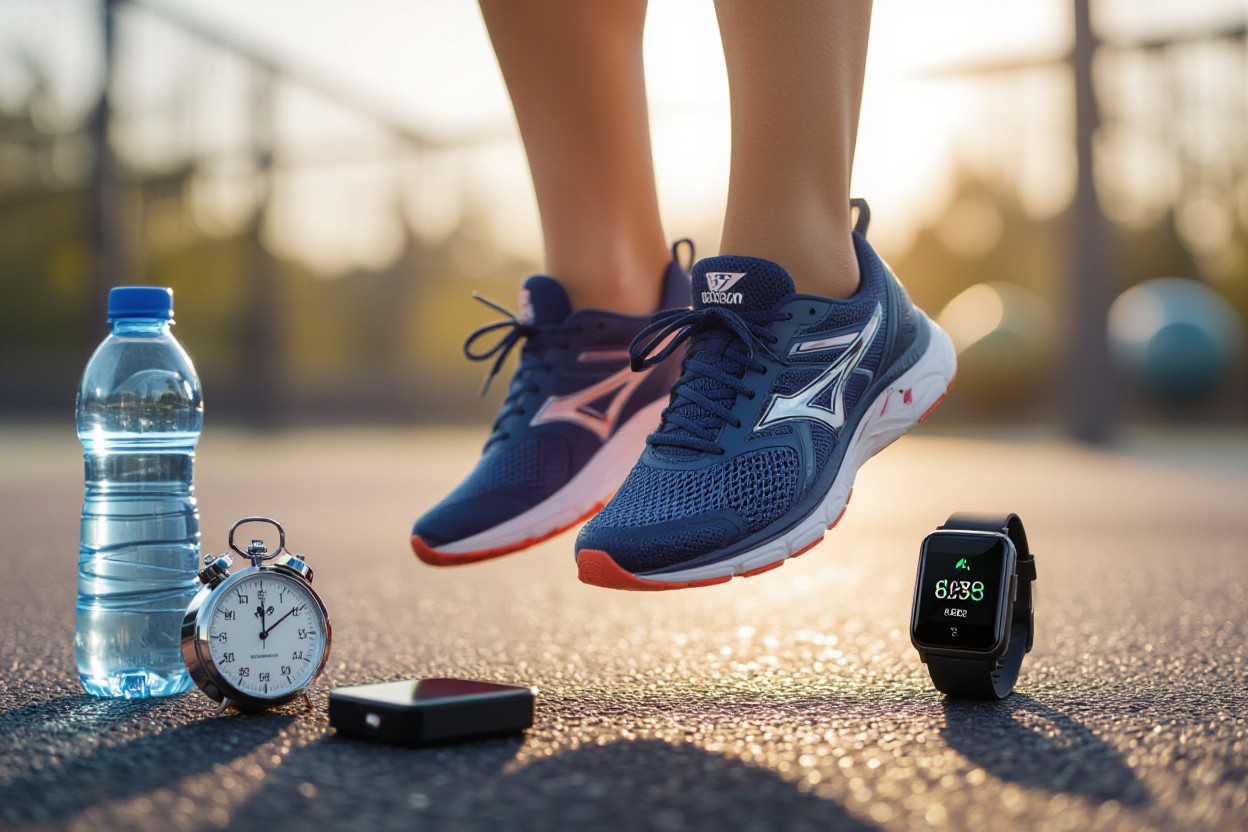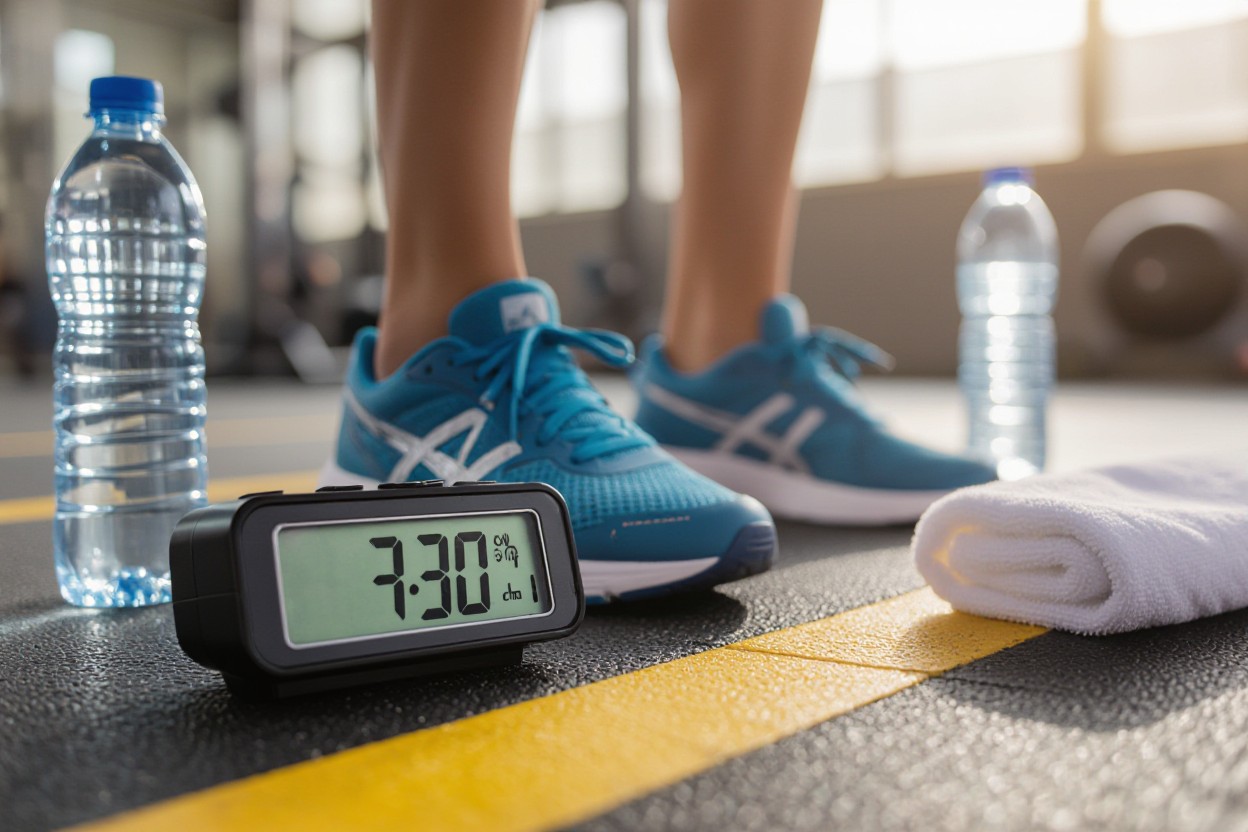Many people seek effective ways to shed excess pounds, and jumping jacks offer a simple yet powerful exercise option to support your weight loss journey. By engaging multiple muscle groups and boosting your heart rate, jumping jacks increase your calorie burn and improve cardiovascular fitness. Incorporating this dynamic movement into your routine can help you accelerate fat loss while enhancing endurance and coordination. Understanding how this full-body workout impacts your metabolism empowers you to optimize your efforts and achieve sustainable results.
The Metabolic Mechanics of Jumping Jacks
Jumping jacks engage multiple muscle groups simultaneously, causing your body to ramp up energy production to meet the increased demand. This full-body involvement triggers a metabolic boost that doesn’t just burn calories during the exercise but can also elevate your resting metabolic rate for hours afterward. By stimulating both aerobic and anaerobic energy systems, jumping jacks facilitate efficient fat oxidation, making them a powerful tool in your weight loss arsenal.
The Energy Expenditure Equation
The total calories burned during jumping jacks depend on your weight, intensity, and duration. For example, a 150-pound person can burn approximately 100 calories in just 10 minutes of moderate-intensity jumping jacks. This rapid energy expenditure arises from continuous muscle contractions demanding ATP production, which compels your body to pull from glycogen stores and fat reserves, catalyzing fat loss when performed consistently.
Impact on Heart Rate and Caloric Burn
Jumping jacks elevate your heart rate swiftly, often pushing it into the target zone of 70-85% of your maximum heart rate, where fat burning is most efficient. This elevated heart rate increases blood flow and oxygen delivery, enabling your muscles to perform sustained work and amplifying your calorie burn significantly compared to less dynamic exercises.
Maintaining an elevated heart rate during jumping jacks not only maximizes calorie expenditure but also improves cardiovascular endurance. Studies show that integrating short bursts of jumping jacks into your routine can increase your heart rate by up to 50%, intensifying post-exercise oxygen consumption (EPOC). This means your body continues to burn calories at an accelerated rate even after you stop, enhancing overall fat loss efficiency.

Jumping Jacks: A Cardiovascular Powerhouse
Jumping jacks elevate your heart rate quickly, placing significant demand on your cardiovascular system. This increase in heart rate improves your body’s efficiency in pumping blood and oxygen to muscles, which enhances endurance and stamina. Consistent cardiovascular activity through jumping jacks also promotes a higher metabolic rate both during and after exercise, meaning your body continues to burn calories even after you stop. By engaging multiple muscle groups simultaneously, jumping jacks ensure a full-body workout, amplifying calorie burn and fostering fat loss through sustained aerobic effort.
How Aerobic Exercise Fuels Fat Loss
Aerobic exercises like jumping jacks stimulate fat metabolism by increasing oxygen consumption, which leads to enhanced breakdown of stored fat for energy. By sustaining moderate-intensity movement for 20-30 minutes, your body taps into fat reserves beyond immediate glycogen stores. This steady energy demand triggers hormonal responses, including elevated norepinephrine levels, that encourage lipolysis. Your mitochondria become more efficient over time, further boosting your capacity to burn fat during both exercise and recovery phases.
The Role of Intervals in Maximizing Results
Incorporating intervals—short bursts of intense activity followed by brief rest—amplifies the fat-burning benefits of jumping jacks. Alternating between high-intensity bursts and lower-intensity recovery phases pushes your cardiovascular system harder, creating an oxygen deficit that triggers accelerated calorie burning post-exercise. This method, known as high-intensity interval training (HIIT), has been shown to increase metabolic rate by up to 15% for hours after your workout, helping you lose weight more efficiently than steady-state cardio alone.
Delving deeper, interval training with jumping jacks challenges your muscles differently by promoting anaerobic energy systems alongside aerobic pathways. This dual stimulation enhances mitochondrial density and hormonal responses, including increased growth hormone and catecholamine secretion, both of which aid in fat mobilization. For example, performing 30 seconds of rapid jumping jacks followed by 30 seconds of active rest repeated for 15-20 minutes optimizes caloric expenditure and fat oxidation. Incorporating these intervals around three times per week can markedly improve your body composition and cardiovascular fitness.

Integrating Jumping Jacks into Your Fitness Routine
Boosting your weight loss efforts with jumping jacks requires consistency and smart integration into workouts. Combining them with strength training or high-intensity interval training (HIIT) maximizes calorie burn and muscle engagement. For example, alternating between jumping jacks and bodyweight exercises can keep your routine dynamic and challenging. Scheduling sessions 3-5 times per week ensures regular cardiovascular stimulation, accelerating fat loss. Thou can build stamina and avoid plateaus by varying the pace and duration of your jumping jacks.
Sample Workouts for Weight Loss
Incorporate jumping jacks into HIIT circuits by performing sets of 30-60 seconds followed by 15-30 seconds of rest, cycling through 4-6 rounds. Try pairing 50 jumping jacks with push-ups and squats for a full-body calorie blast. Alternatively, use jumping jacks as a warm-up to elevate heart rate before strength workouts. Mixing jumping jacks with exercises like lunges and planks enhances cardiovascular and muscular endurance, greatly aiding your weight loss journey. Thou can adjust repetitions and rest to match your fitness level and goals.
Tips for Progression and Consistency
To advance your jumping jack routine, increase repetitions gradually, or introduce variations like cross-jacks and squat jacks to target different muscles. Tracking your progress through reps or time helps maintain motivation and highlights improvements. Incorporate rest days to allow recovery, reducing injury risk. Establishing a routine around your lifestyle heightens adherence. Thou will see more sustained weight loss when balancing progression with steady consistency in practice.
Diving deeper into progression, mixing intensity levels keeps your body adapting and prevents plateaus. For instance, add bursts of speed to standard jumping jacks or incorporate weighted vests for resistance. Consistency solidifies gains; setting specific days and times for workouts builds habit strength. Implementing these strategies ensures your jumping jacks continually challenge your cardiovascular system and elevate metabolism. Thou ensure lasting benefits by combining technique variety with repetition tracking and scheduled recovery.
- Increase repetitions incrementally to build endurance.
- Try jumping jack variations such as cross jacks or squat jacks.
- Track progress to stay motivated and measure improvements.
- Incorporate rest days to prevent injuries and aid muscle recovery.
- Set consistent workout times to create a sustainable habit.
- Use progression techniques like speed bursts or added resistance.
- Balance intensity and rest for optimal fat-burning.
Thou can transform a simple exercise into a powerful weight loss tool with thoughtful progression and unwavering consistency.

Mental and Emotional Benefits of Jumping Jacks
Jumping jacks do more than just enhance your physical health; they also provide a significant mental boost. Engaging in this high-intensity activity triggers your brain to release neurotransmitters that reduce stress and anxiety, helping you feel calmer and more focused. This quick exercise can serve as an immediate mood elevator during hectic days, allowing you to break mental fatigue and increase your overall emotional resilience. Incorporating jumping jacks into your routine can foster a positive mindset, which often supports sustained weight loss efforts by reducing emotional eating and increasing your commitment to fitness goals.
The Endorphin Effect and Motivation Boost
Jumping jacks stimulate a release of endorphins, the body’s natural “feel-good” chemicals, which can profoundly impact your motivation and energy levels. Even short bursts of jumping jacks activate your brain’s reward pathways, producing a sense of euphoria commonly called the “runner’s high.” This biochemical reaction not only helps in managing mood swings but empowers you to stay consistent with your workout regimen. By experiencing these uplifting effects regularly, you’ll likely find it easier to overcome mental barriers and maintain enthusiasm for your weight loss journey.
Building a Sustainable Exercise Habit
Jumping jacks offer a simple, accessible way to initiate and maintain an exercise habit that fits conveniently into your daily routine. Their minimal space and equipment needs reduce common barriers to physical activity, making it easier for you to integrate this exercise consistently. As jumping jacks can be modified to match your fitness level, you can progressively increase intensity, encouraging continuous improvement without burnout. This adaptability supports the development of long-term discipline and helps solidify regular exercise as a natural and enjoyable part of your lifestyle.
Extending beyond convenience, jumping jacks provide measurable progress markers, such as increasing repetitions or reducing rest time, which offer tangible feedback and reinforce your commitment to staying active. Studies have shown that more than 70% of individuals who start with manageable, flexible exercises like jumping jacks maintain higher adherence compared to those who begin with demanding or equipment-heavy workouts. This combination of ease, scalability, and positive reinforcement can turn jumping jacks into a keystone habit that empowers you to sustain consistent physical activity, directly influencing effective and lasting weight loss.
Common Pitfalls and How to Avoid Them
You might assume jumping jacks are a simple, risk-free exercise, but several pitfalls can diminish their effectiveness or increase injury risk. Overdoing the exercise without adequate rest can lead to fatigue and strain, particularly in your knees and ankles. Neglecting to combine jumping jacks with a balanced diet or complementary workouts may also stall your weight loss efforts. Tuning into your body’s responses and adjusting intensity or frequency accordingly will help you dodge these setbacks and sustain progress towards your fitness goals.
Misconceptions About Jumping Jacks
Many people believe jumping jacks alone can melt away fat quickly, but they function best as part of a broader routine. While effective for boosting metabolism and calorie burn, relying solely on jumping jacks ignores other factors like muscle building or diet changes necessary for sustained weight loss. Another myth is that you can spot reduce fat with this exercise, which isn’t possible since fat loss occurs systemically. Understanding these realities helps maintain realistic expectations and encourages a more comprehensive fitness strategy.
Importance of Proper Technique and Safety
Jumping jacks demand coordination and control to protect your joints and maximize benefits. Poor technique, such as landing hard on your heels or failing to engage your core, can cause unnecessary strain on your knees, ankles, and lower back. Using improper form repeatedly increases injury risk and may lead to discomfort that discourages continued exercise. Paying attention to smooth, controlled movements and engaging stabilizing muscles enhances workout efficiency and reduces safety concerns.
Engaging the correct muscles throughout the motion stabilizes your body and absorbs impact more effectively, especially when landing from each jump. Keeping your knees slightly bent upon landing decreases shock transmitted up your legs, lowering the risk of joint wear or inflammation. Maintaining a strong core alignment supports your spine, preventing lower back pain often reported by exercisers performing jumping jacks on hard surfaces. Using supportive footwear and exercising on softer flooring can also lessen impact stresses. These adjustments ensure you remain injury-free while benefiting fully from jumping jacks’ cardiovascular and metabolic effects.
Final Words
Following this, incorporating jumping jacks into your fitness routine can effectively aid in weight loss by boosting your heart rate and increasing calorie burn. As a full-body exercise, jumping jacks engage multiple muscle groups simultaneously, enhancing your metabolism and promoting fat loss. Consistent practice, combined with a balanced diet, will help you manage your weight more efficiently. By making jumping jacks a regular part of your workouts, you can improve cardiovascular health, build endurance, and accelerate your journey toward a healthier, leaner body.
FAQ
Q: How do jumping jacks contribute to burning calories?
A: Jumping jacks increase your heart rate and engage multiple muscle groups simultaneously, which helps boost your metabolism. This elevated energy expenditure results in burning more calories, contributing to weight loss when combined with a proper diet.
Q: Can doing jumping jacks regularly help reduce body fat?
A: Yes, performing jumping jacks consistently can help reduce body fat as they provide cardiovascular exercise that burn calories and fat. Over time, incorporating jumping jacks into your fitness routine can promote fat loss throughout the body.
Q: How many jumping jacks should I do daily to aid in weight loss?
A: The amount varies by individual fitness levels, but starting with 3 sets of 30 to 50 jumping jacks three to five times per week is a good approach. Gradually increasing the duration and intensity helps maximize calorie burn and supports weight loss goals.
Q: Are jumping jacks effective for weight loss without other exercises?
A: Jumping jacks alone can aid in weight loss, especially if done regularly and combined with healthy eating habits. However, for best results, it’s beneficial to include a variety of exercises that target different muscle groups and enhance overall fitness.
Q: How do jumping jacks improve metabolism for weight loss?
A: Jumping jacks elevate your heart rate and increase oxygen consumption, which stimulates your metabolism to work harder. An improved metabolism helps your body burn calories more efficiently, assisting in the reduction of excess weight.
Q: Can jumping jacks help with weight loss for beginners?
A: Absolutely. Jumping jacks are a low-cost, low-impact exercise that beginners can perform easily. They provide a full-body workout that helps improve cardiovascular health and calorie burning, making them an excellent starting point for weight loss.
Q: Should jumping jacks be combined with other workouts for better weight loss results?
A: Yes, combining jumping jacks with strength training and flexibility exercises enhances overall fitness and promotes more effective weight loss. Cross-training helps prevent plateauing and ensures balanced muscle development.
